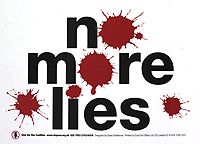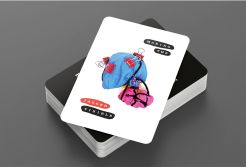26 September 2007
Weapons of Mass Communication
MMU curates Imperial War Museum exhibition

THE IRAQ War, like so many before it, demonstrates that the struggle for hearts and minds is as much a battle as the military conflict itself.
Public opinion during wartime can be as influenced by art and imagery as by the speeches of politicians and generals.
A major new exhibition of war images and their impact is being co-curated by MMU’s Jim Aulich, at the Imperial War Museum in London.
Weapons of Mass Communication opens on October 4 and features hundreds of the most eye-catching and controversial posters from the two World Wars, Vietnam, the Falklands and Iraq which reflect the public pitch of both governments and anti-war protestors.
No more lies
Iconic First World War designs such as Alfred Leete’s Kitchener recruitment poster are shown alongside 21st Century Stop the War Coalition graphics including David Gentleman’s ‘no more lies’ (right).
Dr Aulich, a reader in visual culture at the Manchester Institute of Research and Innovation in Art and Design (Miriad), has selected and contextualised the images and written a book to accompany the exhibition published by Thames & Hudson.
He says: "The exhibition explores the changing role of posters; from their use as government propaganda and to define visions of society in the first part of the 20th Century, to the increasing commercialisation and links to branding in more recent years."
Controversial designs are also included, such as Stop Nuclear Suicide by FHK Henrion which was banned on the London Underground.
The exhibition at the Imperial War Museum in London runs until March 30, 2008.
Dr Jim Aulich is director of the ARHC funded Resource Enhancement project 'Posters of Conflict: the visual culture of public information and counter information 1914-2005,' a collaboration with the Imperial War Museum. He can be contacted on 0161 247 1928 j.aulich@mmu.ac.uk.


